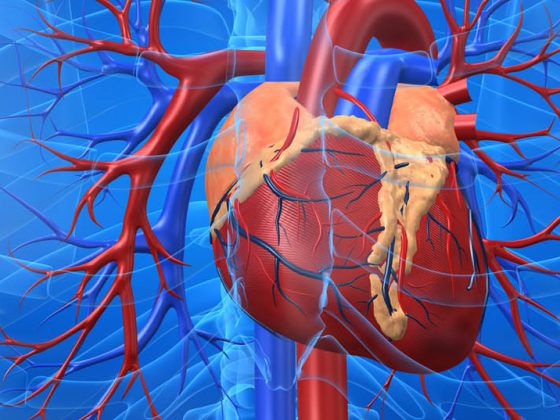At this year’s EULAR congress, Prof. Thomas Bardin, MD, Paris, went into more detail about the many therapeutic strategies for gout and other crystal-induced diseases. In particular, he discussed the advantages and disadvantages of the various drugs used for acute and chronic inflammation.
Prof. Thomas Bardin, MD, Paris, began his presentation with an overview of possible management strategies for acute gout attacks. On the one hand, cooling and rest can already help; on the other hand, colchicines and non-steroidal anti-inflammatory drugs (NSAIDs) are often used in combination. Glucocorticoids and anti-IL-1 are also effective. “The general rule is that drugs work better if they are given early. However, gout cannot be cured with them in any case,” says Prof. Bardin.
The 2006 EULAR recommendations state that high doses of colchicine can lead to side effects, but small doses (e.g., 3× 0.5 mg/d) are already effective in some patients. This is confirmed by a study by Terkeltaub et al. (2010): Administration of low-dose colchicine (1.8 mg/day) was better tolerated (fewer side effects such as diarrhea or vomiting) and had about the same efficacy as the high dose (4.8 mg/d) [1]. The 2012 ACR recommendations for the use of colchicine in acute gout also consider a starting dose of 1.2 mg plus 0.6 mg one hour later, followed by 0.6 mg once or twice daily until the gout attack is over.
The comparison between an NSAID (naproxen) and a synthetic glucocorticoid (prednisolone) was undertaken by Janssens et al. (2008) [2]. The result: prednisolone and naproxen are equally effective in the initial treatment of gout over four days.
IL-1 inhibitors have mostly been studied in the context of acute gout attacks. According to Prof. Bardin, they can be considered as a treatment option in patients who are difficult to treat. However, no IL-1 inhibitor has yet been commercialized with this indication. In addition, there are concerns about the cost and tolerance of long-term IL-1 inhibition. There are data showing good efficacy for anakinra, for example, although not consistently. Especially in acute gout, this IL-1 receptor antagonist seems to be efficient, less so in chronic inflammation. Canakinumab is a long-lived anti-IL-1 antibody. Schlesinger et al. were able to show in 2012 that canakinumab offered significant relief in terms of pain as well as inflammation and reduced the risk of new attacks in patients with acute gout [3].
CPP and BCP inflammation
Cooling, rest, joint aspiration, or steroid injections may be used to manage acute calcium pyrophosphate (CPP) inflammation. In addition, colchicines, NSAIDs , steroids, adrenocorticotropic hormones (ACTH), and IL1 blockers act. In the chronic form, in addition to systemic steroids, colchicine, NSAIDs, joint injections with steroids, radioisotopes and hydroxychloroquine can be used. Methotrexate or IL-1 blockers may also be considered.
Basic calcium phosphate (BCP) inflammation is treatable with NSAIDs, steroids, cholchicine, or anakinra, according to Prof. Bardin.
Avoid deposits
The most important part of gout therapy is controlling monosodium urate (MSU) deposition, Prof. Bardin emphasized. Lowering the uremia below the saturation level for MSU allows resolution of the crystal deposits and thus the gout characteristics. The target here, according to the EULAR recommendations, would be a value of <6 mg/dl (360 mmol/l). In tophus gout forms, the target values may be set even lower, which raises the question of whether effective new drugs or combination therapies lower the value too much, Prof. Bardin said. “Uric acid is an antioxidant that is beneficial for the brain. This is stated by various studies. Furthermore, there seems to be a correlation between extreme uric acid levels and mortality [4].”
So how can urate be lowered? Lifestyle modification such as diet and exercise have only a moderate impact on uremia. It is important to discontinue hyperuricemia-inducing drugs (diuretics, cyclosporine, tacrolimus) and use those that have a urate-lowering effect, such as allopurinol or probenecid. In 2010, a study by Thanassoulis et al. show that the administration of allopurinol may be particularly useful for gout patients with cardiac defects [5]. “Several issues are problematic with allopurinol, however. Most physicians do not go beyond a maximum dose of 300 mg/d. Thus, they often do not reach the uremic target of <6 mg/dl. In addition, the drug can cause serious skin reactions (Lyell, Steven-Johnson, DRESS),” said Prof. Bardin. “Overall, adherence to urate-lowering drugs (ULDs) in gout is relatively poor compared with other chronic diseases.” So in any case, the patient must be well informed and intensively involved in the decision-making process.”
Source: “Gout and other crystal diseases,” EULAR, June 12-15, 2013, Madrid.
Literature:
- Terkeltaub RA, et al: High versus low dosing of oral colchicine for early acute gout flare: Twenty-four-hour outcome of the first multicenter, randomized, double-blind, placebo-controlled, parallel-group, dose-comparison colchicine study. Arthritis Rheum 2010 Apr; 62(4): 1060-1068. doi: 10.1002/art.27327.
- Janssens HJ, et al: Use of oral prednisolone or naproxen for the treatment of gout arthritis: a double-blind, randomised equivalence trial. Lancet 2008 May 31; 371(9627): 1854-1860. doi: 10.1016/S0140-6736(08)60799-0.
- Schlesinger N, et al: Canakinumab for acute gouty arthritis in patients with limited treatment options: results from two randomised, multicentre, active-controlled, double-blind trials and their initial extensions. Ann Rheum Dis 2012; 71: 1839-1848. doi:10.1136/annrheumdis-2011-200908.
- Kuo CF, et al: Significance of serum uric acid levels on the risk of all-cause and cardiovascular mortality. Rheumatology (Oxford) 2013; 52(1): 127-134.
- Thanassoulis G, et al: Gout, allopurinol use, and heart failure outcomes. Arch Intern Med 2010; 170(15): 1358-1364. doi:10.1001/archinternmed.2010.198.











